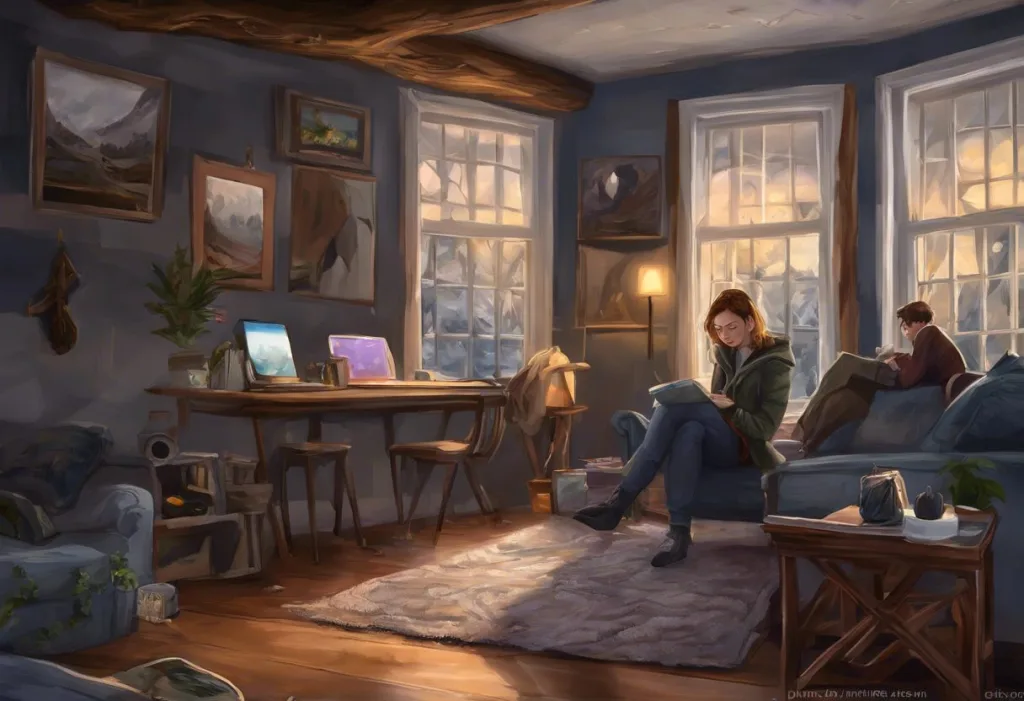Visual snow syndrome (VSS) is a neurological condition characterized by the persistent presence of tiny, flickering dots in one’s visual field, resembling the static on an old television screen. This phenomenon is often accompanied by other visual disturbances, such as afterimages, light sensitivity, and difficulty seeing in low light conditions. While the exact prevalence of VSS is unknown, it is believed to affect a significant number of individuals worldwide, with varying degrees of severity.
Living with visual snow syndrome can be challenging, as the constant visual disturbances can interfere with daily activities such as reading, driving, and even maintaining eye contact during conversations. Many individuals with VSS report feelings of frustration, anxiety, and isolation as they struggle to explain their experiences to others who may not understand or believe their symptoms.
The Anxiety-Visual Snow Connection: A Vicious Cycle
Anxiety and visual snow syndrome often go hand in hand, creating a complex interplay of symptoms that can exacerbate both conditions.
For many individuals with VSS, the persistent visual disturbances can trigger feelings of anxiety and stress. The constant presence of visual “noise” can be overwhelming and may lead to worries about one’s health, vision, and overall well-being. This anxiety, in turn, can intensify the perception of visual snow symptoms, creating a vicious cycle that can be difficult to break.
Stress, a common trigger for anxiety, has also been reported to worsen visual snow symptoms in some individuals. This relationship between stress and VSS highlights the importance of stress management techniques in coping with both conditions. Cognitive-behavioral therapy (CBT), mindfulness practices, and relaxation exercises may be beneficial in reducing anxiety and potentially alleviating some of the distress associated with visual snow syndrome.
ADHD and Visual Snow: Unraveling the Connection
Attention-deficit/hyperactivity disorder (ADHD) is a neurodevelopmental condition characterized by difficulties with attention, hyperactivity, and impulsivity. While ADHD and visual snow syndrome may seem unrelated at first glance, there are intriguing connections between the two conditions that warrant further exploration.
Some researchers have proposed that ADHD and visual snow syndrome may share similar neurological processes, particularly in terms of sensory processing and attentional regulation. Both conditions involve alterations in the brain’s ability to filter and process sensory information, which can lead to feelings of overwhelm and difficulty focusing.
Similarly, recognizing the potential overlap between ADHD and visual snow syndrome in both children and adults is essential for accurate diagnosis and effective treatment.
Individuals with ADHD may be more susceptible to noticing and fixating on visual disturbances, potentially intensifying the perception of visual snow symptoms. The attentional deficits associated with ADHD could make it more challenging to ignore or adapt to the constant visual “noise” experienced in VSS.
Research on the co-occurrence of ADHD and visual snow syndrome is limited, but anecdotal reports and small-scale studies suggest that there may be a higher prevalence of VSS among individuals with ADHD compared to the general population. This potential link underscores the need for further investigation into the relationship between these two conditions.


